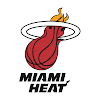The Chrysler Corporation was founded on June 6th, 1925 by Walter P. Chrysler. The company originates from the Maxwell Motor Company, which Walter P. Chrysler had joined in the early 1920s. In 1928, Chrysler Corporation expanded with the purchase of Dodge and the creation of the DeSoto and Plymouth divisions. Chrysler aquired the American Motors Corporation and its Jeep brand in 1987.
The DeSoto brand was dropped in 1961 and the Plymouth brand in 2001.
After a merger with Daimler-Benz Corporation in 1998, the company was part of DaimlerChrysler until 2007.
In 2007, the American private equity company Cerberus aquired an 80.1 % majority stake of Chrysler LLC, leaving a 19.9 % stake to the German Daimler AG.
Advanced and revolutionary engineering helped to move the company into second position ahead of Ford for U.S. sales in the late 1930s, a position it held for over a decade until 1949. Strong sales generated by its entry-level Dodge and Plymouth brands helped Chrysler survive the years of the Depression. Plymouth was one of only a few makes that actually increased sales during this era.
Chrysler was the first company to introduce four-wheel hydraulic brakes (1924) and rubber engine mounts (1926). It was also one of the first to take a scientific approach on aerodynamics - using the industry’s first windtunnel -, weight-distribution, and suspension geometry with the Inline-8 powered Airflow.
The company’s famous Hemi V8 made its debut in 1951 with a displacement of 5.4-liters (331 cu-in.) and 180hp. In the ‘60s, the Hemi grew to 7.0-liters (426 cu-in.) and powered Dodge and Plymouth muscle cars like the Dodge Charger and Challenger, Plymouth Hemi 'Cuda and RoadRunner. Despite only 11,000 engines produced for road use, the Hemi fuelled the muscle car wars of the ‘60s and became a major automotive icon.
The third generation Hemi V8 was released in 2002, when it was initially used for the Dodge Ram. Since then, the 5.7-liter V8 has been introduced on several performance cars in the Chrysler stable like the Chrysler 300C, Dodge Charger, Dodge Magnum, and Dodge Challenger.
In the 1960s, Chrysler was the first of the Big Three to introduce unibody, a construction technique offering improved rigidity, handling, and crash safety that is now standard on most passenger vehicles.
The 1970s proved a difficult time for Chrysler. The 1973 oil crisis and new government emissions standards presented a major challenge for American manufacturers with their large, powerful, and gas-guzzling vehicles. In need of smaller, more efficient vehicles, Chrysler acquired a 15% stake in Mitsubishi Motors in 1971 and began selling rebadged Mitsubishi models in the United States soon after. Nonetheless, high manufacturing costs due to dated factories and an uninspiring model lineup brought the company in financial trouble. In 1979, the Chrysler Corporation petitioned the U.S. government for $1.5 billion in loan guarantees to avoid bankruptcy.
With new CEO Lee Iacocca in charge, the manufacturing facilities were modernized and new models based on the K-car platform were well-received. Thanks to this new-found profitability, the loans could be repaid by the early ‘80s. Innovative vehicles like the modern Minivan helped the company thrive throughout the 1990s.
After the merger with Daimler-Benz in 1998, the company came into trouble again. After a cost-cutting program under new CEO Dieter Zetsche, Chrysler eventually returned to profitability for a short time. In 2007, the DaimlerChrysler sold an 80.1 % stake of the Chrysler Group to the American private equity firm Cerberus for $7.4 billion.
Upon completion of the sale, the company was renamed to Chrysler LLC.
Source: www.jbcarpages.com
Subscribe to:
Post Comments (Atom)















































0 comments:
Post a Comment